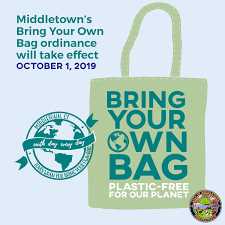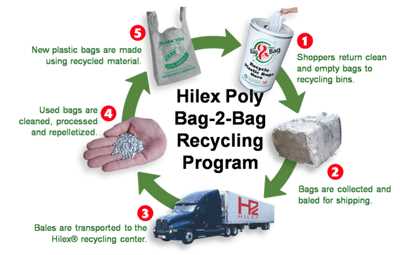Plastic bag ban and material recycling are two crucial measures that can significantly reduce waste and contribute to the protection of our environment. Plastic bags, once seen as a convenient option for carrying groceries and other items, have become a major source of pollution and harm to wildlife. By implementing a ban on plastic bags, communities can take a big step towards a cleaner and safer world.
Plastic bags are not biodegradable and can take hundreds of years to break down. These bags often end up in landfills where they occupy precious space and release harmful chemicals into the soil and water. Additionally, plastic bags are lightweight and easily carried by wind, often ending up in rivers, lakes, and oceans, where they pose a significant threat to marine life. Animals mistake plastic bags for food, which can lead to entanglement, suffocation, and death.
Implementing a plastic bag ban can have several positive impacts. It can reduce the consumption of these single-use items and encourage the use of alternative options like reusable bags or biodegradable materials. By reducing the production and disposal of plastic bags, we can conserve resources, save energy, and decrease greenhouse gas emissions associated with their manufacturing process. Moreover, a plastic bag ban can raise awareness about the importance of waste reduction and the need for sustainable practices.
Material recycling is another crucial component of waste reduction. Through recycling, we can give new life to materials that would otherwise end up in landfills or incinerators. Plastics, glass, paper, and metal can all be recycled, and the process of recycling reduces energy consumption and pollution compared to the production of new materials. Recycling also helps to reduce the demand for raw resources, conserve natural habitats, and decrease the environmental impacts associated with extraction and processing.
To effectively reduce waste and protect the environment, it is essential to implement a comprehensive approach that includes both a plastic bag ban and material recycling. By reducing our reliance on plastic bags and promoting recycling practices, we can make a significant difference in the amount of waste generated and the preservation of our natural resources. It is crucial for individuals, businesses, and governments to work together and commit to sustainable practices that prioritize environmental protection and ensure a cleaner and healthier planet for future generations.
- Plastic Bag Ban: Advantages and Impact on the Environment
- Alternatives to Plastic Bags: What You Can Use Instead
- 1. Reusable Cloth Bags
- 2. Paper Bags
- 3. Tote Bags
- 4. Mesh Produce Bags
- 5. Glass or Stainless Steel Containers
- Material Recycling: How it Works and Why it Matters
- How Material Recycling Works:
- Why Material Recycling Matters:
- Question-answer:
- Why is there a plastic bag ban?
- How does the ban on plastic bags help protect the environment?
- What alternatives are there to plastic bags?
- How can individuals contribute to the reduction of waste?
- What happens to plastic bags that are not recycled?
Plastic Bag Ban: Advantages and Impact on the Environment
Introduction:
Plastic bags have become a prominent symbol of pollution and environmental degradation. They are non-biodegradable and take hundreds of years to decompose. In an effort to reduce plastic waste, many cities and countries around the world have implemented bans on single-use plastic bags. This article explores the advantages and the impact of such bans on the environment.
Advantages of Plastic Bag Ban:
1. Reduction in plastic pollution: The ban on plastic bags helps in reducing the amount of plastic waste that ends up in landfills, rivers, and oceans. By eliminating single-use plastic bags, the ban encourages consumers to opt for reusable alternatives such as cloth bags or paper bags, which are more eco-friendly.
2. Conservation of natural resources: The production of plastic bags requires the extraction of fossil fuels and the use of large amounts of water. By banning plastic bags, we can conserve these valuable resources and reduce the strain on the environment.
3. Protection of wildlife: Plastic bags pose a significant threat to wildlife, especially marine animals. Many marine creatures mistake plastic bags for food and ingest them, leading to suffocation, entanglement, and poisoning. By banning plastic bags, we can ensure the safety and well-being of various species.
Impact on the Environment:
1. Reduction in greenhouse gas emissions: The production and disposal of plastic bags contribute to the emission of greenhouse gases, including carbon dioxide. By banning plastic bags, we can mitigate these emissions and combat climate change.
2. Positive impact on ecosystems: Plastic bags not only harm wildlife but also disrupt ecosystems. The ban on plastic bags allows ecosystems to recover and restore their natural balance, leading to improved biodiversity and ecological stability.
3. Promotion of sustainable alternatives: Plastic bag bans provide an opportunity to promote the use of sustainable alternatives like reusable bags made from organic materials. This shift towards greener options supports the growth of a more sustainable and circular economy.
Conclusion:
The ban on plastic bags offers several advantages and has a significant positive impact on the environment. By implementing such bans, communities can take a significant step towards reducing plastic waste, conserving natural resources, protecting wildlife, and promoting sustainable alternatives. It is essential for individuals, businesses, and policymakers to work together to enforce and support these ban initiatives for a cleaner and healthier planet.
Alternatives to Plastic Bags: What You Can Use Instead
Plastic bags are a major contributor to environmental pollution and can take hundreds of years to break down in landfills. Fortunately, there are many alternatives to plastic bags that can help reduce waste and protect the environment. Here are some options:
1. Reusable Cloth Bags
One of the most convenient and eco-friendly alternatives to plastic bags is the use of reusable cloth bags. These bags are made from materials such as cotton or canvas and can be used multiple times. They are sturdy, washable, and can carry heavy loads. Keep a few reusable bags in your car or in your bag for whenever you need to go shopping.
2. Paper Bags
If you forget your reusable bags or need additional bags, opt for paper bags instead of plastic. Paper bags are biodegradable and can be recycled multiple times. Many grocery stores offer paper bags as an alternative to plastic bags, and some even charge a small fee for them to encourage their use.
3. Tote Bags

Tote bags are another excellent alternative to plastic bags. These bags are usually made of fabric, such as canvas, and have sturdy handles for easy carrying. Tote bags are versatile and can be used not only for grocery shopping but also for other daily activities like going to the gym or carrying books.
4. Mesh Produce Bags
If you’re looking for an alternative to plastic produce bags, consider using mesh produce bags. These lightweight bags are made of breathable fabric or mesh and can be used to hold fruits, vegetables, or other loose items. They are washable and reusable, making them a great option for reducing plastic waste.
5. Glass or Stainless Steel Containers
For storing food or leftovers, consider using glass or stainless steel containers instead of plastic bags. These containers are durable, can be used in the microwave or oven, and are easy to clean. By using glass or stainless steel containers, you eliminate the need for disposable plastic bags and reduce waste.
By actively choosing alternatives to plastic bags and promoting their use, we can significantly reduce waste and protect the environment for future generations. Together, we can make a difference!
Material Recycling: How it Works and Why it Matters
Material recycling is the process of collecting and reprocessing materials that would otherwise be considered waste and turning them into new products. It is an essential practice in reducing waste, conserving resources, and protecting the environment.
How Material Recycling Works:
1. Collection: The process begins with the collection of recyclable materials, such as paper, plastics, glass, and metals. These materials are usually collected through curbside recycling programs, drop-off centers, or dedicated recycling bins.
2. Sorting: Once collected, the materials are transported to a recycling facility, where they are sorted into different categories. This is done using advanced technologies, including sorting machines and manual labor.
3. Processing: After sorting, the materials undergo a series of processing steps. For example, plastics are cleaned, shredded, and melted down to form pellets, which can then be used to manufacture new plastic products.
4. Manufacturing: The processed materials are then used as raw materials in the manufacturing of new products. For example, recycled paper can be used to make new paper products, such as newspapers or cardboard boxes.
5. Market for Recycled Products: Finally, the newly manufactured products made from recycled materials are sold in the market, creating a demand for recycling and closing the loop on the recycling process.
Why Material Recycling Matters:

1. Waste Reduction: By recycling materials, less waste ends up in landfills or incinerators, reducing the environmental impact of waste disposal and conserving valuable landfill space.
2. Resource Conservation: Recycling helps conserve natural resources, such as timber, water, and minerals, by reducing the need for extracting raw materials through mining or logging.
3. Energy Savings: It takes less energy to manufacture products from recycled materials compared to producing them from raw materials. Recycling reduces the energy consumption associated with extraction, transportation, and processing of raw materials.
4. Greenhouse Gas Emissions: Recycling reduces the emission of greenhouse gases, such as carbon dioxide, methane, and nitrous oxide, which contribute to climate change. It helps mitigate the environmental impact of the production and disposal of materials.
5. Economic Benefits: Material recycling creates jobs in the recycling industry and contributes to a sustainable and circular economy. It can also help reduce the dependence on imported raw materials, improving economic stability.
Material recycling is a critical component of waste management and environmental sustainability. By understanding how it works and why it matters, individuals and communities can actively participate in recycling efforts and contribute to a greener and cleaner future.
Question-answer:
Why is there a plastic bag ban?
The plastic bag ban is implemented in order to reduce the usage of single-use plastic bags and decrease the amount of waste that ends up in landfills and pollutes the environment. Plastic bags are not biodegradable and take hundreds of years to decompose.
How does the ban on plastic bags help protect the environment?
The ban on plastic bags helps protect the environment by reducing the amount of plastic waste that ends up in landfills, rivers, and oceans. It encourages individuals to use reusable bags instead of single-use plastic bags, which helps to decrease pollution and protect wildlife.
What alternatives are there to plastic bags?
There are various alternatives to plastic bags, such as reusable cloth bags, paper bags, or biodegradable bags made from materials like cornstarch. These alternatives are more eco-friendly and can be used multiple times.
How can individuals contribute to the reduction of waste?
Individuals can contribute to the reduction of waste by practicing recycling, using reusable bags, bottles, and containers, and opting for products with less packaging. They can also participate in community recycling programs and educate others about the importance of waste reduction.
What happens to plastic bags that are not recycled?
Plastic bags that are not recycled often end up in landfills, where they take hundreds of years to decompose. They can also be carried by wind and water and end up in oceans, causing harm to marine life. In some cases, they may be incinerated, releasing harmful gases into the atmosphere.